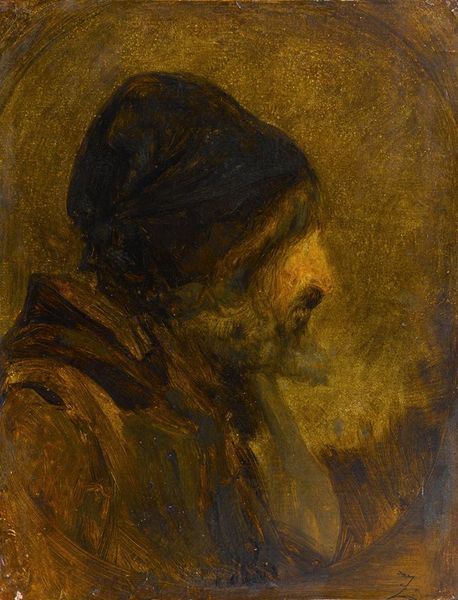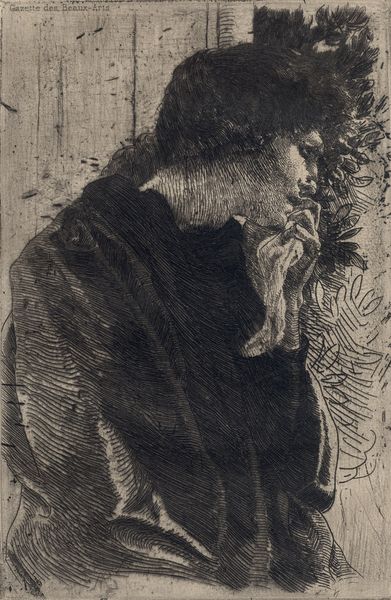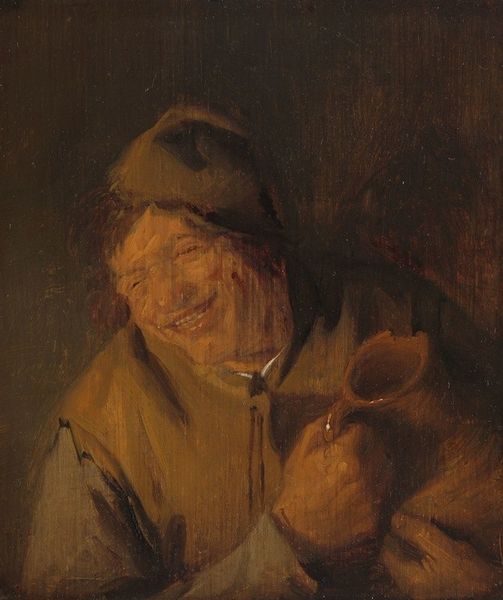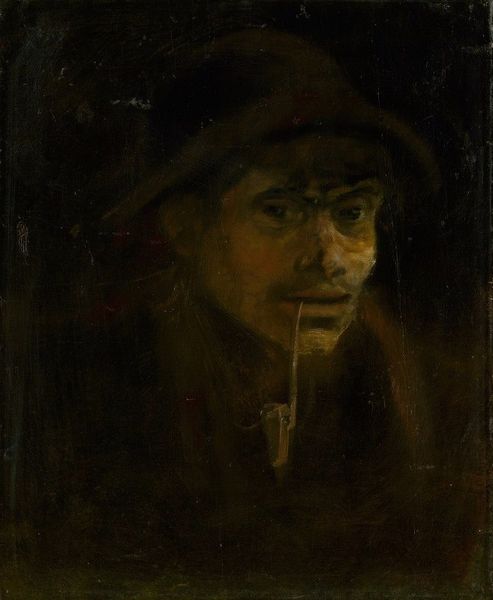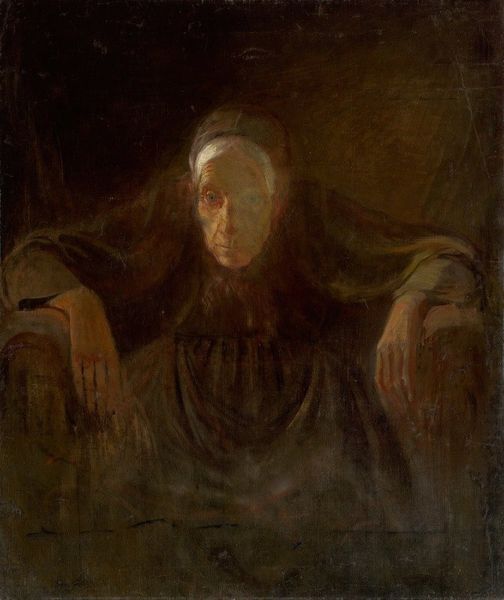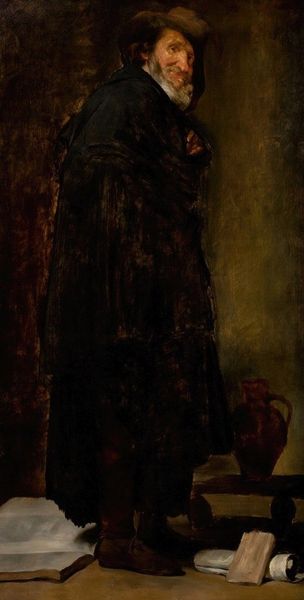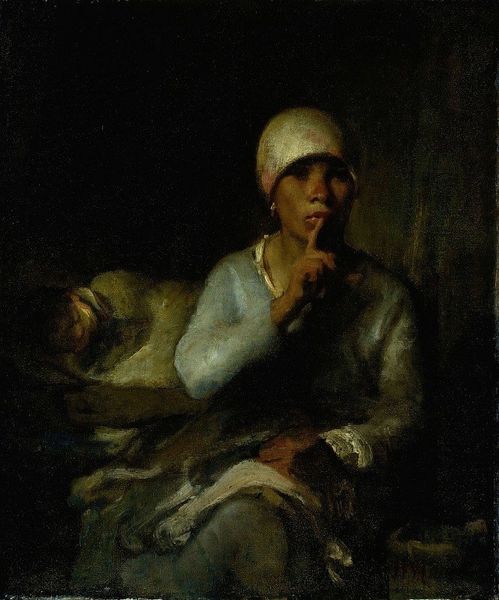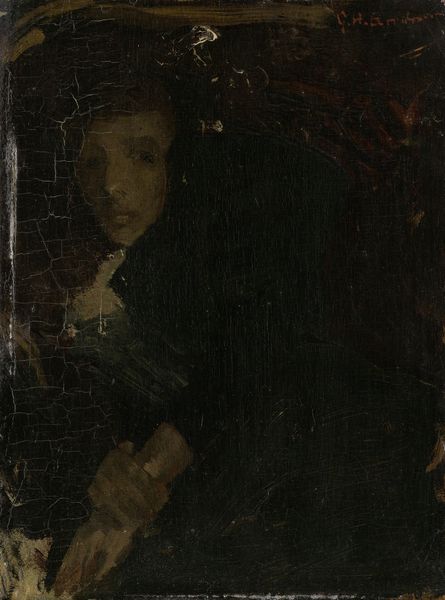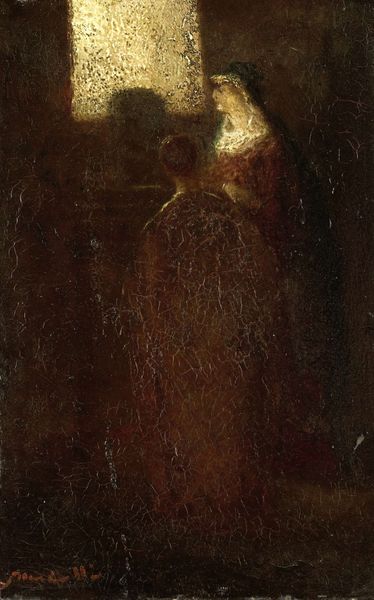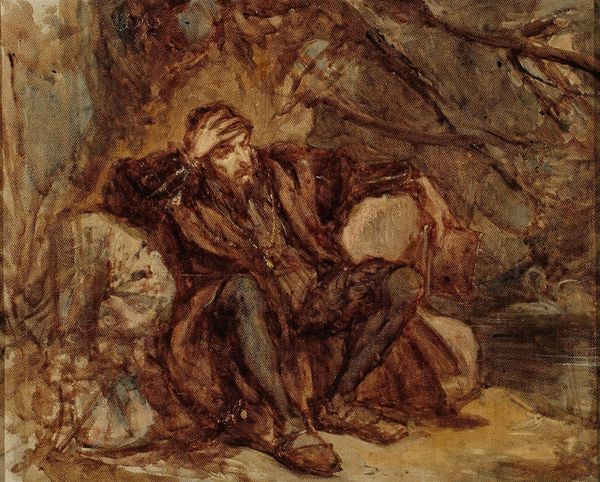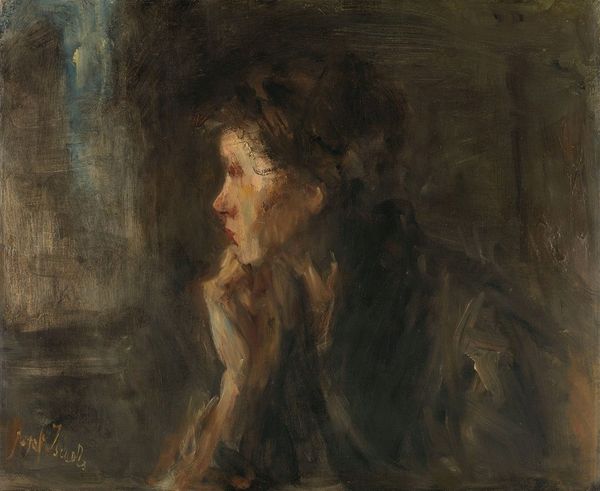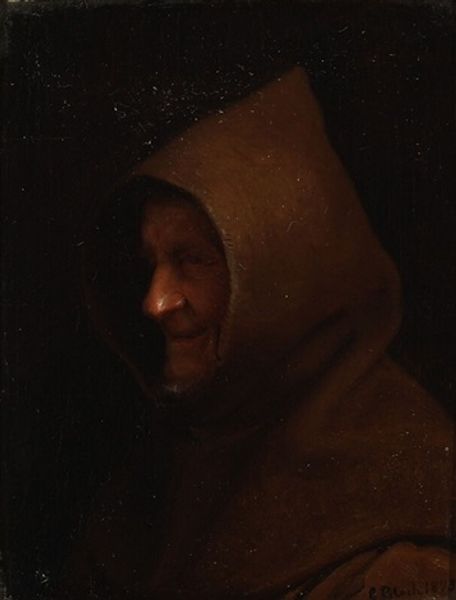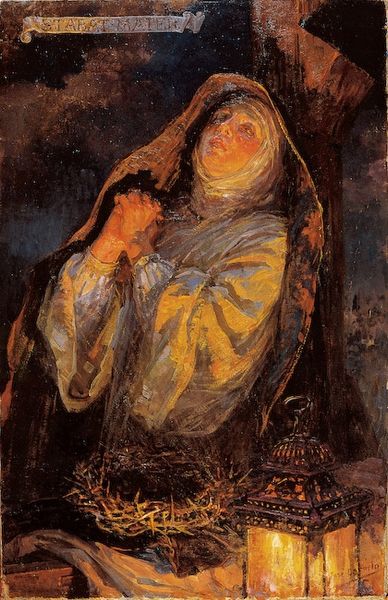
Copyright: Public domain
Editor: We're looking at "Judas," painted by Ilya Repin in 1885 using oil paints. The gloom is practically swallowing the figure, and the intensity of his eyes just pierces through. What are your initial thoughts on this painting? Curator: The painting offers a glimpse into the complex intersection of religious narrative and 19th-century Russian intellectual thought. Repin’s "Judas" arrives amidst a fervent interest in realism, aiming to humanize biblical figures and reflect on societal betrayals and moral ambiguities. What do you make of his hand gesture? Editor: He's got his finger to his lips, as if trying to stifle a secret...or a scream. Curator: Exactly. Consider the social and political landscape of Russia at that time. The role of the intelligentsia, often critical of the establishment, and the weight of moral responsibility, can’t be divorced from Repin’s work. Is he just an individual, or is he symbolic of something larger? Editor: He seems to embody guilt, and also…maybe a challenge to power. I mean, what drove him to that act in the first place? Was it purely greed? Curator: That's the core question, isn't it? Repin avoids easy answers. Think about the public's reaction to art that questions established narratives. Was this painting a commentary on contemporary Russian society, reflecting its own internal struggles and moral conflicts through a biblical lens? Editor: I see it now. It’s not just a depiction of a historical betrayal; it’s a reflection on betrayal in general, relevant to Russia’s socio-political struggles. Curator: Precisely! Repin uses historical painting to explore the ethical dimensions of power, culpability, and the ever-blurring lines of right and wrong in a society undergoing immense change. A very powerful piece indeed!
Comments
No comments
Be the first to comment and join the conversation on the ultimate creative platform.
